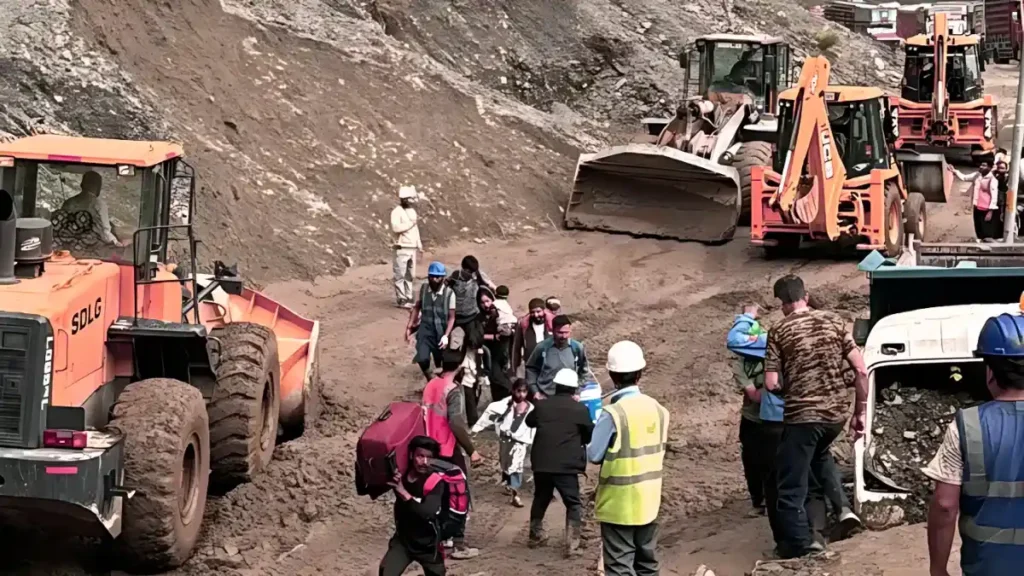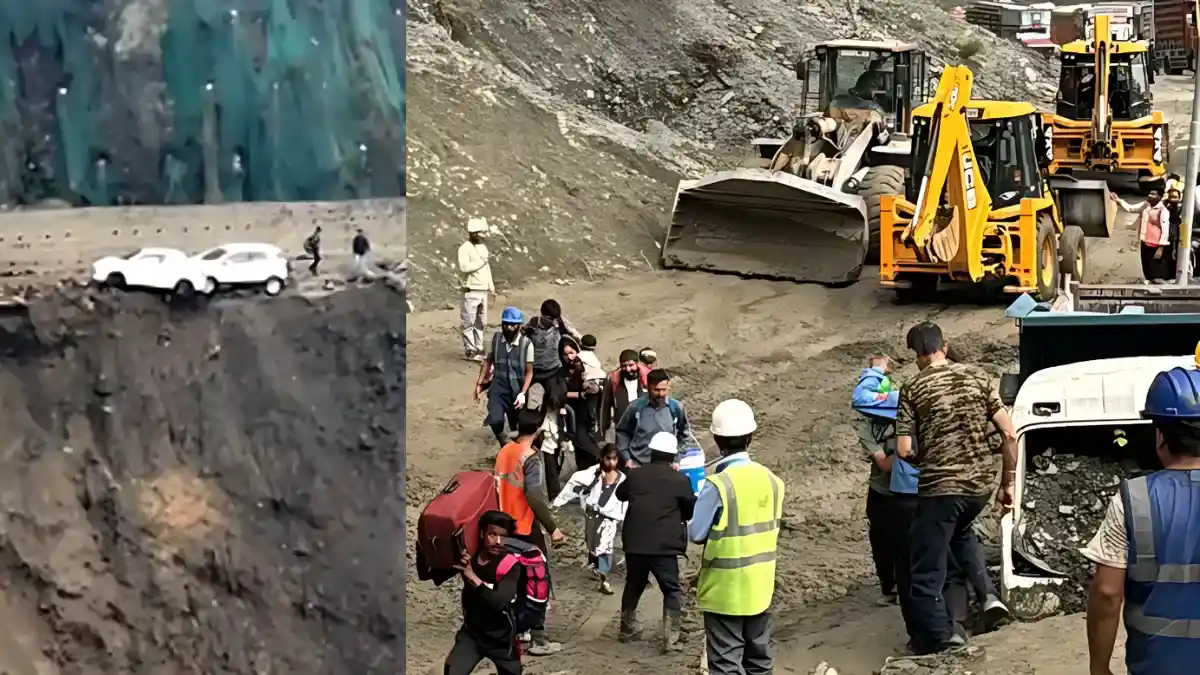The Jammu Srinagar Highway: A Lifeline Transformed, Yet Challenged
The Jammu Srinagar Highway, officially known as National Highway 44 (NH44), serves as a critical artery connecting the Jammu region with the Kashmir Valley. This 270-kilometer stretch, winding through rugged mountains and scenic landscapes, is more than just a road; it is a lifeline for millions of residents, tourists, and businesses. Recent upgrades have promised smoother travel and enhanced connectivity, but persistent challenges, including delays and weather-related disruptions, continue to test its reliability. As India pushes for better infrastructure, the highway’s transformation reflects both progress and hurdles.
A Vital Link for Kashmir’s Economy and Tourism
The Jammu Srinagar Highway is the primary route for transporting goods, fuel, and essentials to the Kashmir Valley. For decades, it has facilitated trade and supported the region’s economy, particularly its apple orchards and handicraft industries. Additionally, the highway is a gateway for tourists flocking to Kashmir’s breathtaking destinations, such as Srinagar, Gulmarg, and Pahalgam. According to recent government reports, over 1.5 million tourists visited Jammu and Kashmir in 2024, largely relying on this highway for access.
However, the highway’s importance is matched by its challenges. Landslides, heavy snowfall, and avalanches frequently disrupt traffic, especially during winter months. These natural obstacles have historically stranded travelers and delayed supplies, impacting local businesses. To address these issues, the Indian government has invested heavily in modernizing the highway, aiming to make it an all-weather route. Such efforts are crucial for sustaining economic growth and ensuring year-round connectivity.
Major Upgrades Bring Hope
In recent years, the Jammu Srinagar Highway has undergone significant improvements, sparking optimism among commuters and businesses. The National Highways Authority of India (NHAI) has spearheaded projects to widen the road, construct tunnels, and install advanced safety features. Notably, the 9-kilometer Chenani-Nashri Tunnel, one of Asia’s longest road tunnels, has reduced travel time by nearly two hours. Additionally, new bridges and bypasses have eased congestion in busy towns like Ramban and Udhampur.

These upgrades have not only improved travel efficiency but also enhanced safety. For instance, real-time monitoring systems now alert authorities to potential landslides, allowing for quicker response times. Furthermore, the government has allocated funds for a four-lane expansion, expected to be completed by 2027. Once finished, the highway will accommodate higher traffic volumes, supporting the region’s growing tourism and trade demands. Such advancements signal a promising future for this vital corridor.
Persistent Challenges and Delays
Despite these achievements, the Jammu Srinagar Highway faces ongoing challenges that frustrate commuters. Construction delays, often due to funding issues or difficult terrain, have slowed progress on key sections. For example, the Banihal-Qazigund stretch remains prone to bottlenecks, causing hours-long traffic jams. Moreover, unpredictable weather continues to disrupt travel, with heavy rains triggering landslides in monsoon season. These disruptions have sparked criticism from locals, who argue that the pace of modernization is too slow.
Additionally, the highway’s maintenance has come under scrutiny. While tunnels and bridges have improved connectivity, poorly maintained stretches, particularly in rural areas, pose risks to drivers. Road accidents, though reduced, remain a concern, with over 200 incidents reported in 2024, according to local police data. Addressing these issues requires sustained investment and better coordination between state and central authorities. Until then, the highway’s full potential remains unrealized.

The Road Ahead: Opportunities and Expectations
Looking forward, the Jammu Srinagar Highway holds immense potential to transform the region. The government’s vision of an all-weather, four-lane highway promises to boost trade, tourism, and connectivity. Plans for additional tunnels, such as the 8.5-kilometer Zojila Tunnel, are expected to further reduce travel time and ensure year-round access. These projects align with India’s broader goal of strengthening infrastructure in border regions, particularly in strategically important areas like Jammu and Kashmir.
However, success hinges on overcoming current obstacles. Stakeholders, including local communities and businesses, are calling for faster project timelines and improved maintenance. Public-private partnerships could also play a role in accelerating development while ensuring quality. As the highway evolves, it has the power to reshape Jammu and Kashmir’s economic landscape, making it a symbol of progress and resilience.
Community Impact and Voices
For residents, the Jammu Srinagar Highway is more than a route; it’s a connection to opportunities. Farmers in the Kashmir Valley rely on it to transport apples and saffron to markets in Jammu and beyond. Similarly, small businesses depend on timely deliveries to remain competitive. “The highway is our lifeline,” says Mohammad Aslam, a fruit trader from Srinagar. “But delays and closures hurt our income. We need a road we can trust year-round.”
Tourists, too, have mixed experiences. While many praise the scenic beauty and improved travel times, others complain about unexpected roadblocks. “The views are stunning, but getting stuck for hours is frustrating,” says Priya Sharma, a visitor from Delhi. These sentiments underscore the need for consistent improvements to meet the expectations of diverse users.
Also Read: MLA Pandori: ਪੰਜਾਬ ਸਰਕਾਰ ਵੱਲੋਂ Youth ਲਈ Merit Basis ‘ਤੇ Jobs
In Conclusion, The Jammu Srinagar Highway stands at a crossroads of progress and challenges. Its transformation through tunnels, widened roads, and safety measures reflects India’s commitment to modernizing infrastructure. Yet, delays, weather disruptions, and maintenance issues highlight the work still needed. As the government pushes for a reliable, all-weather route, the highway’s success will depend on addressing these hurdles while meeting the needs of residents, businesses, and tourists. With continued investment and innovation, this vital corridor can become a model of connectivity and resilience for the nation.
FAQs
1. Why is the Jammu Srinagar Highway important?
The Jammu Srinagar Highway, or NH44, is a critical route connecting Jammu with the Kashmir Valley. It supports trade, tourism, and the transport of essential goods, serving as a lifeline for the region’s economy.
2. What upgrades have been made to the highway?
Recent upgrades include the Chenani-Nashri Tunnel, new bridges, bypasses, and real-time landslide monitoring systems. A four-lane expansion is also underway, expected to finish by 2027.
3. What challenges does the highway face?
The highway faces challenges like construction delays, landslides, heavy snowfall, and poor maintenance in some areas. These issues cause traffic disruptions and safety concerns.
4. How does the highway impact tourism in Kashmir?
The highway is the main access route for tourists visiting Kashmir’s popular destinations. Improved infrastructure has boosted tourism, but delays and closures can frustrate travelers.
5. What is the future of the Jammu Srinagar Highway?
The government aims to make the highway an all-weather, four-lane route with additional tunnels like the Zojila Tunnel. These projects will enhance connectivity and support economic growth.

